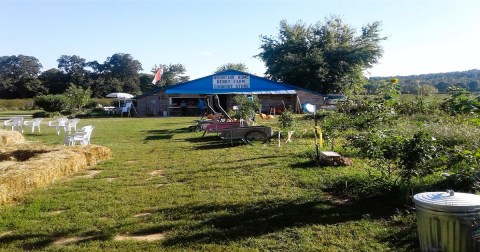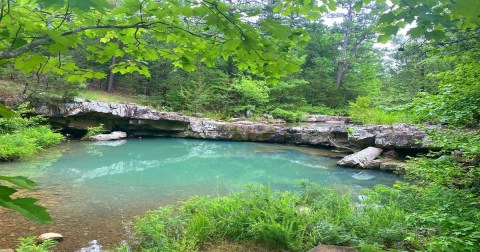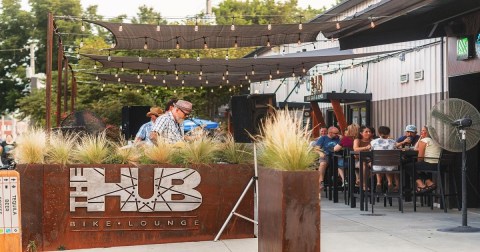These 55 Vintage Arkansas Postcards Are A Trip Back Through Time
Whether it’s coins, cards, stamps, or magazines, a lot of people enjoy collecting items to see how time and age compare what’s been preserved to what’s modern. The same goes with postcards, which are almost like photographs in that they’re a part of a moment of a bygone era. These vintage Arkansas postcards give an interesting glimpse into the past of the Natural State.
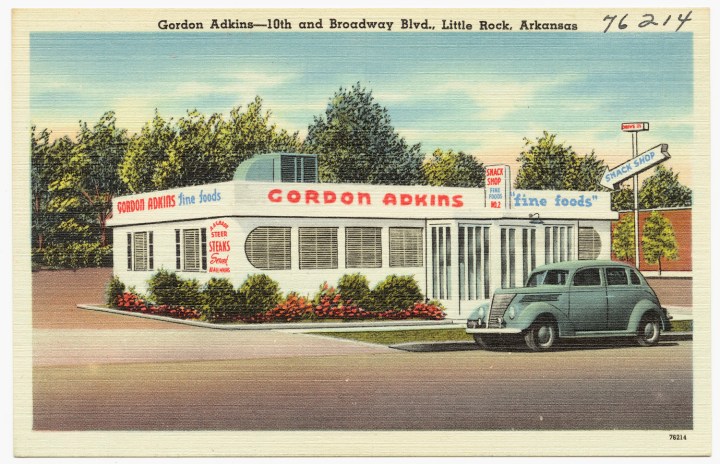
The former Gordon Adkins restaurant could be found on 10th and Broadway in the capital city.

Carroll County is located in the northwest part of Arkansas.
Advertisement
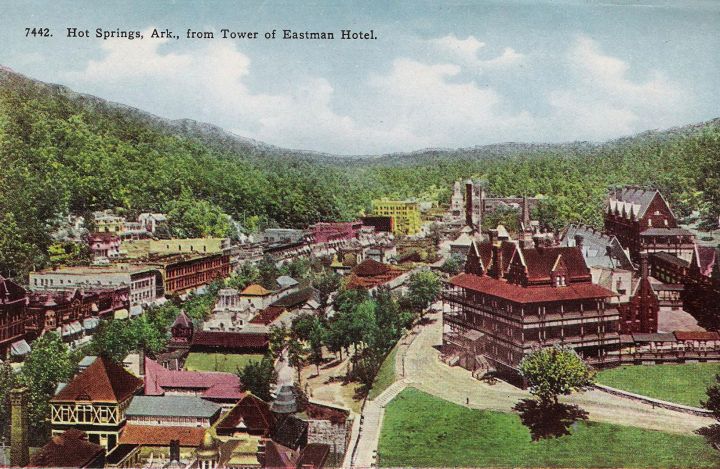
The Army Navy Hospital is now known as the Hot Springs Rehabilitation Center.
Advertisement
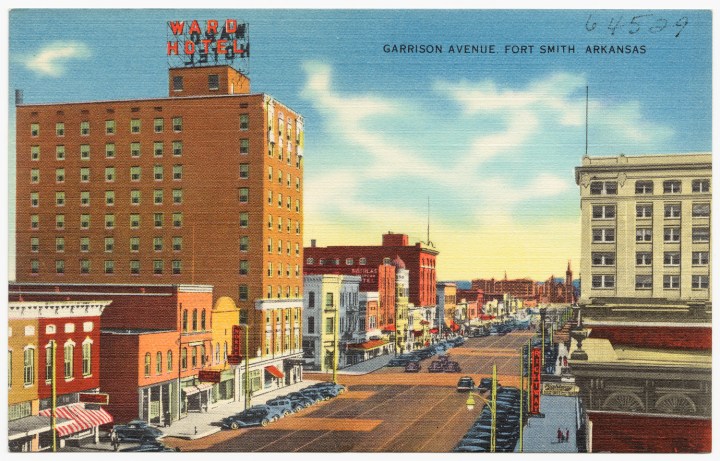
Garrison Avenue is the cultural heart and center of downtown Fort Smith.
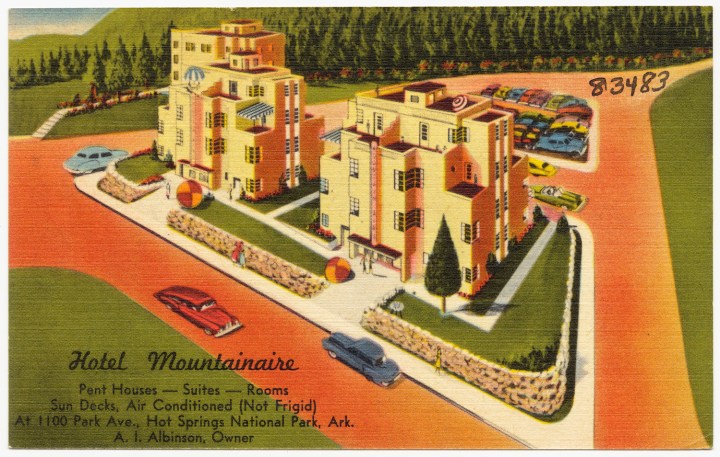
Built in 1947, this hotel remains one of the finest examples of Art Moderne architecture in the area and perhaps even in the state.
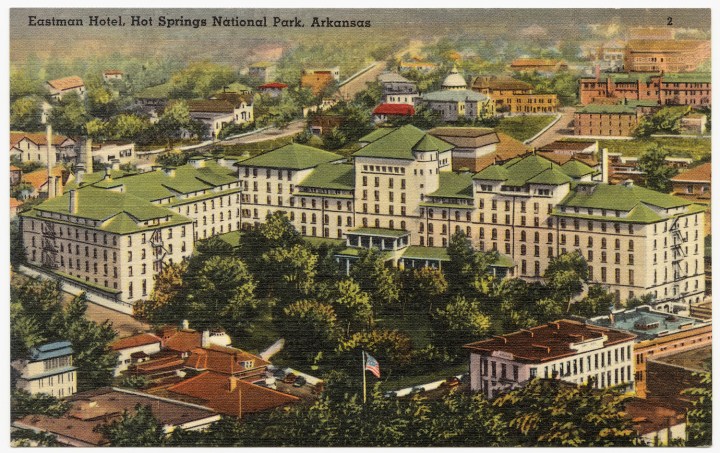
Here Babe Ruth flipped a coin to settle his 1921 salary dispute with the Yankees. In 1925, Walter Johnson received a hero’s welcome upon returning to town after his World Series triumph and awed guests on the veranda by pitching on the hotel lawn.
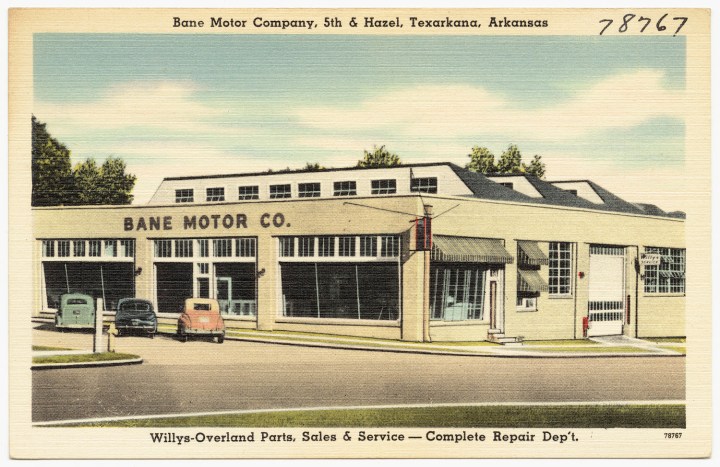
The Bane Motor Company was located on 5th and Hazel streets in Texarkana.
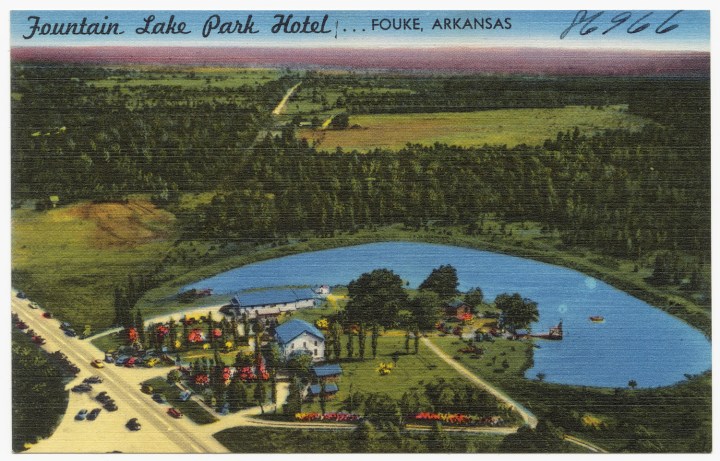
Fouke, Arkansas is located in the southwestern tip of the state, bordering Texas.
Advertisement
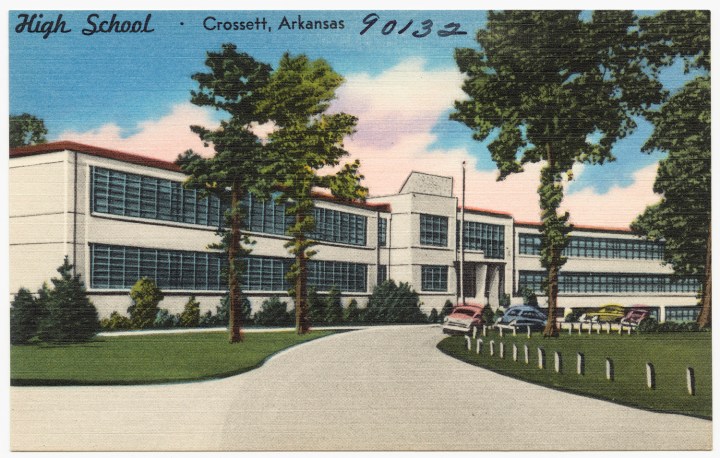
Crossett High School is a comprehensive public high school in Crossett, Arkansas. It is one of two public high schools located in Ashley County, and the sole high school administered by the Crossett School District.

Fountain Lake is located in Hot Springs National Park.
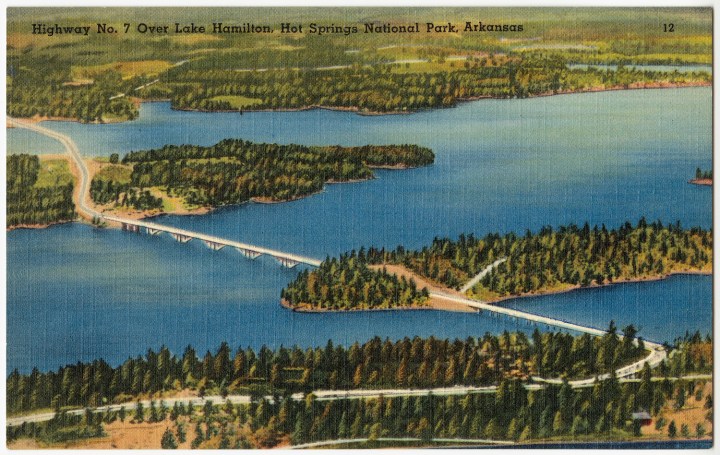
As Arkansas's longest state highway, Highway 7's route runs 296 miles from Louisiana Highway 558 at the Louisiana state line north to Bull Shoals Lake at Diamond City near the Missouri state line.
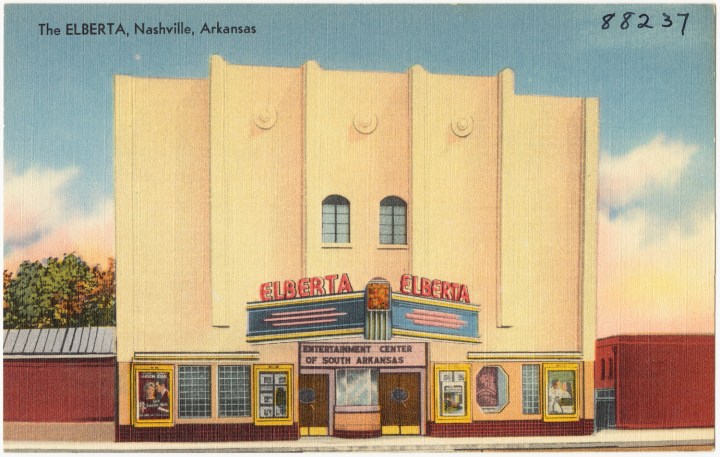
Nashville, Arkansas is located in Howard County, near the southeast corner of the state.
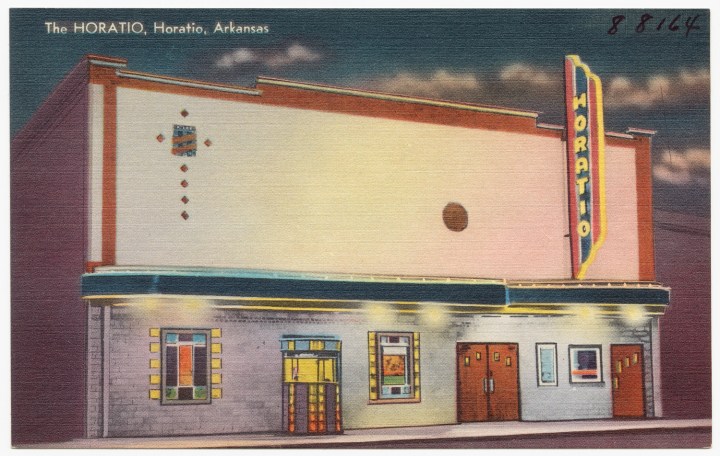
Located in Sevier County, Arkansas, Horatio is in the southeast portion of the state.
Advertisement

The Rose Inn was located in Crossett, Arkansas, the site where Crossett's Centennial Park is now located.
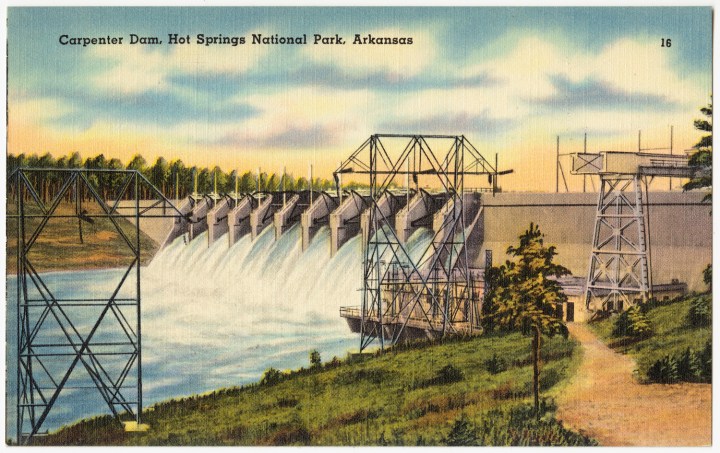
Carpenter Dam was listed on the National Register of Historic Places on September 4, 1992, in recognition of its role in the growth and development of Hot Springs.
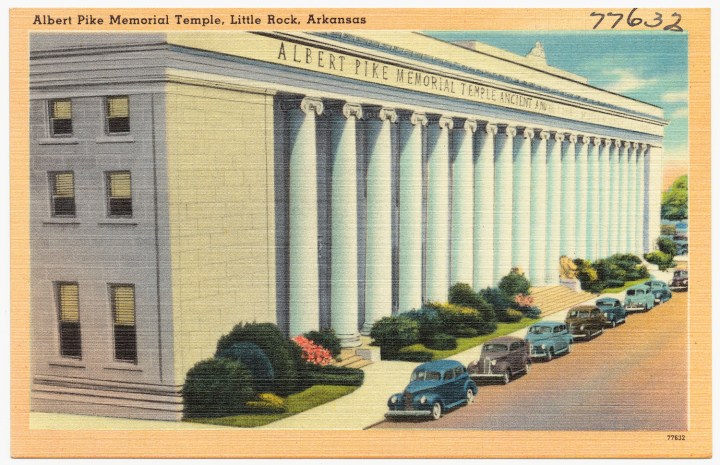
The temple is named for Albert Pike, a prominent figure in the history of Arkansas, who played a major role in the establishment of Freemasonry in the state.
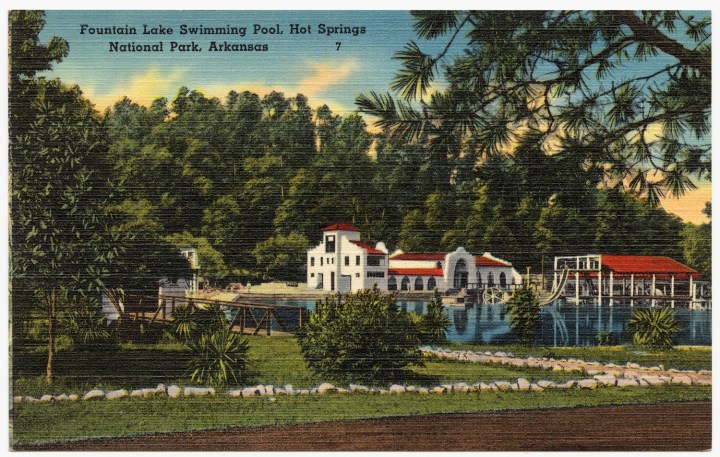
Many locations across Hot Springs were attractions for visitors around the nation.
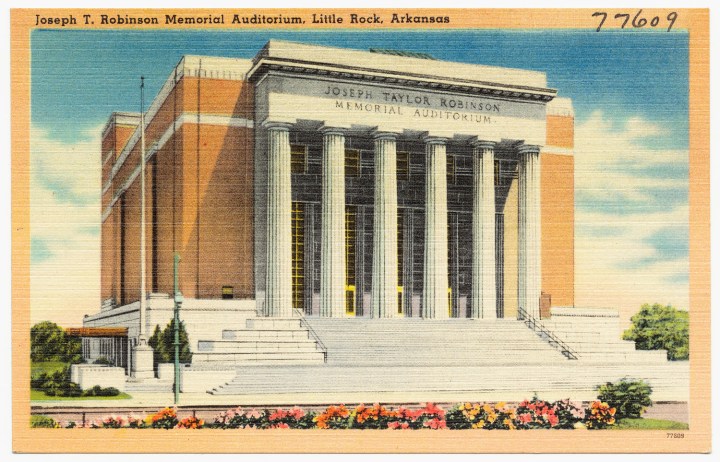
The center is named for Joseph Taylor Robinson, a powerful former U.S. Senator and Congressman and Arkansas governor, and is one of several locations and facilities that bear his name.
Advertisement
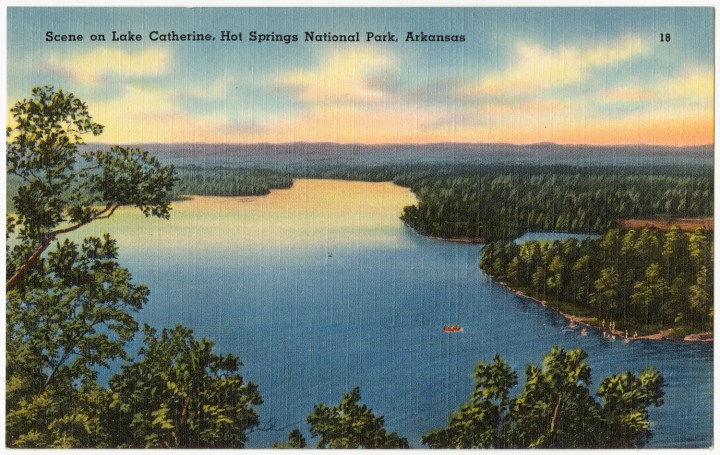
Lake Catherine is located just minutes south of Hot Springs, Arkansas's most popular tourist destination.

Trout floats on the White, Little Red and Spring Rivers, plus bass and panfish outings on the lakes and smaller streams, make for world-class fishing action.
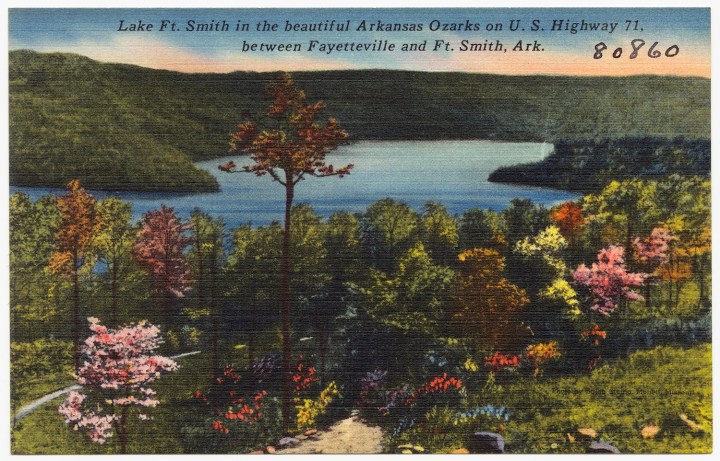
From its original location, Lake Fort Smith State Park was relocated to this site on the lake's western side due to the enlarging of Lake Fort Smith and Lake Shepherd Springs into a single reservoir to provide additional water storage for the future needs of the municipal water supply serving Fort Smith, Arkansas.
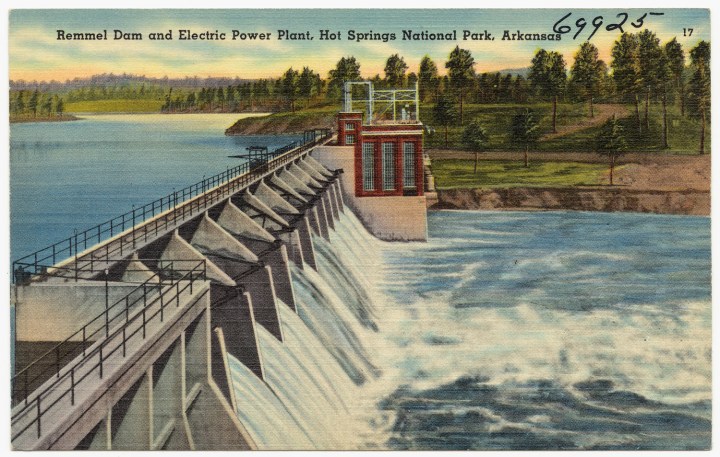
The dam impounds Lake Catherine and, together with Carpenter Dam in Hot Springs, Arkansas, provides hydroelectric power for the southern part of the state.
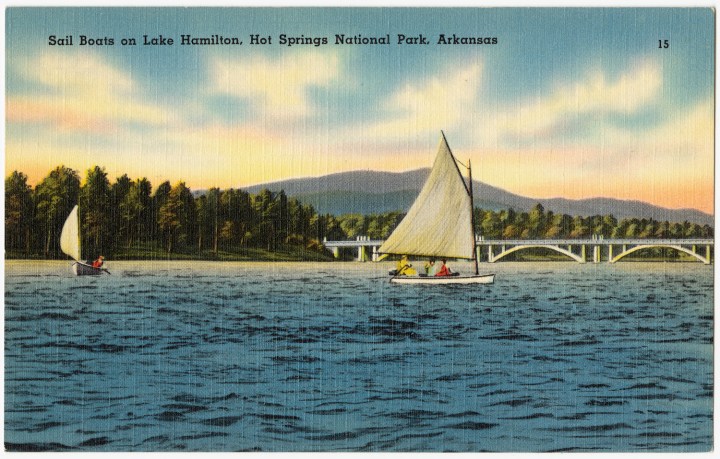
Today, the 7,460-acre impoundment is one of Arkansas's most popular recreational and residential lakes. Much of it is ringed with condominiums, resorts, motels, restaurants and private homes.
Advertisement
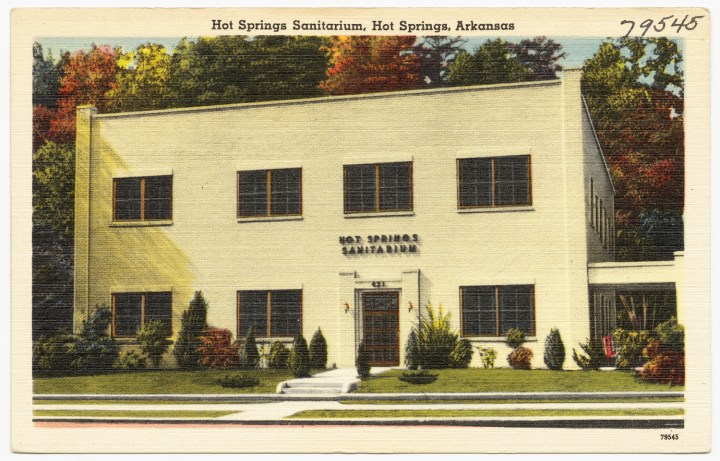
The belief at the time was held that bathing in warm mineral waters could cure a host of mental and physical ailments.
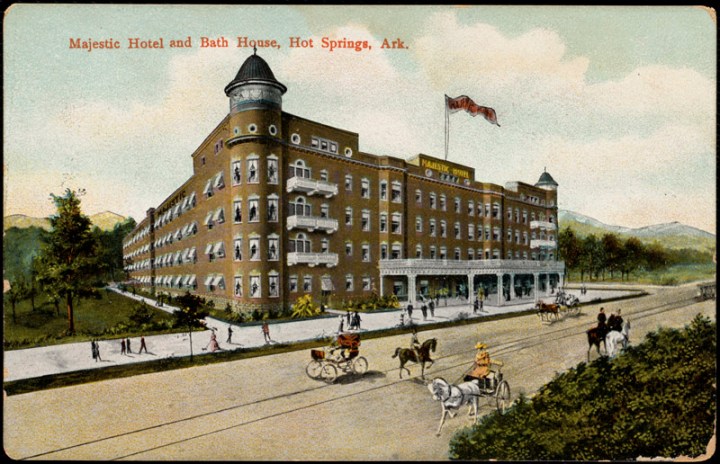
Radio Station, KTHS, owned a tower atop the Majestic Hotel and featured wonderful music including that of the "Southerners Orchestra", complete with a banjo picker. The stations call letters stood for, "Kome To Hot Springs".
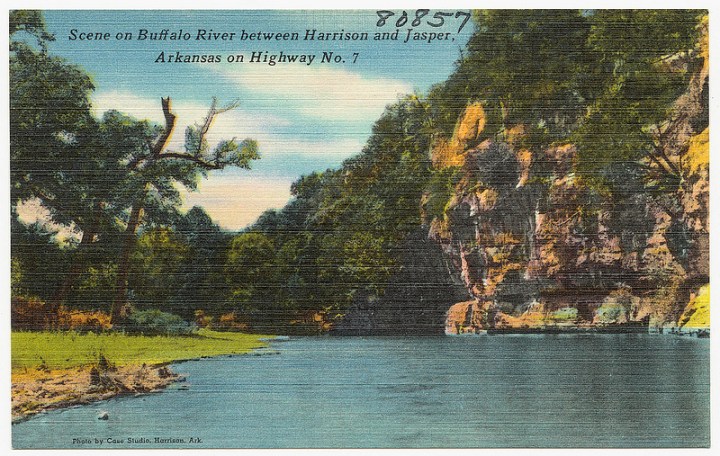
The Buffalo River remains one of the very few wholly unpolluted and green locations in the United States.
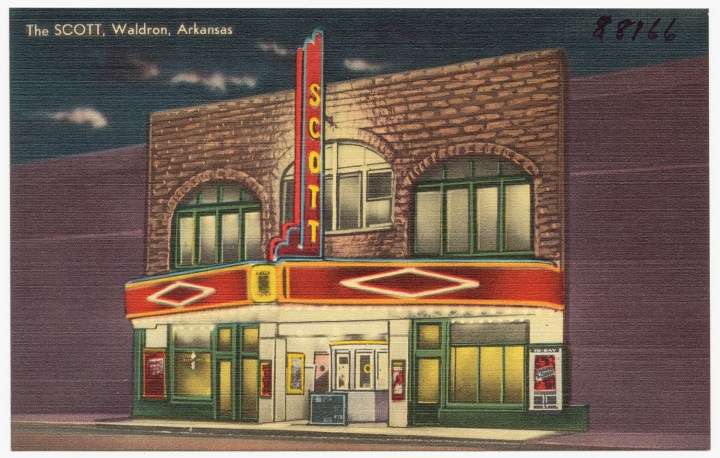
Waldron, Arkansas is located in Scott County on the western end of the state.
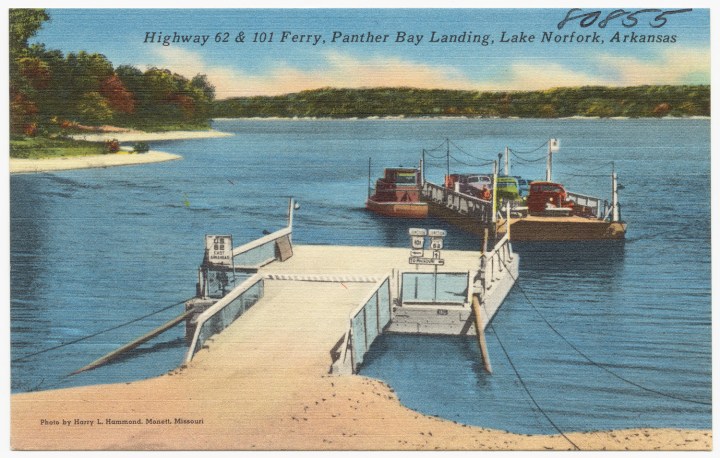
Lake Norfork is located in northern Arkansas southeast of Mountain Home
Advertisement

Gurdon is a town in Clark County, Arkansas toward the southwest part of the state.
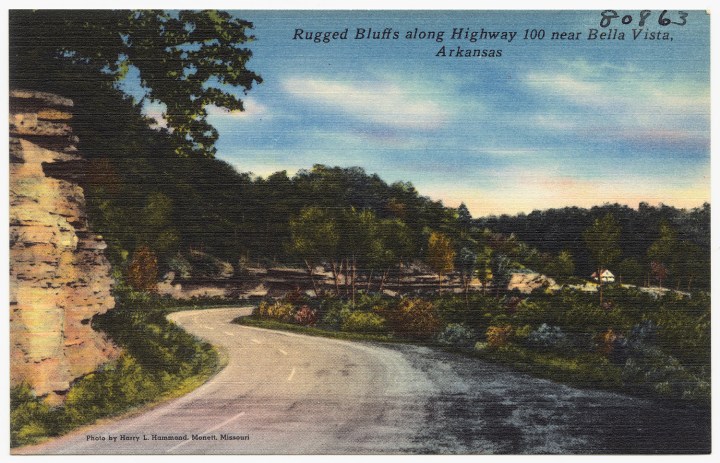
Bella Vista has seven lakes. These lakes are not "public" in that only members of the community or their guests are permitted to use them. Lake Ann, Lake Windsor, and Lake Loch Lomond are the largest all-sports lakes in the town. Lake Avalon, Lake Norwood, and Lake Rayburn are primarily fishing lakes with "no wake" restrictions.
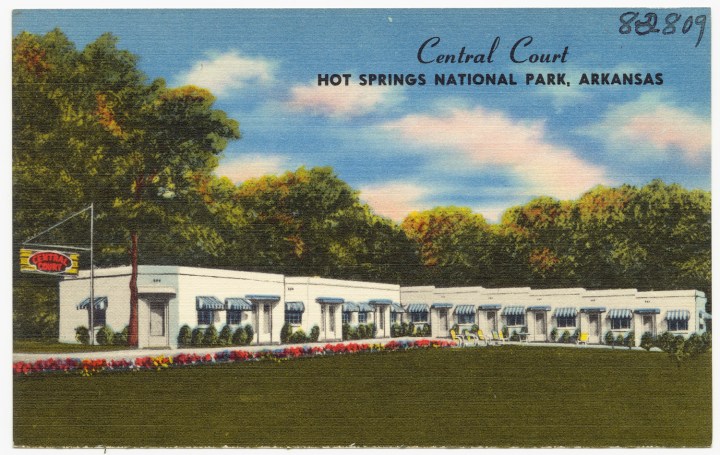
Tourist camps and courts were a common form of lodging for travelers in the United States from the 1930s to the 1960s. The terms "tourist camp" and "tourist court" were used to describe both an individual cabin or room rented for the night and the business as a whole.
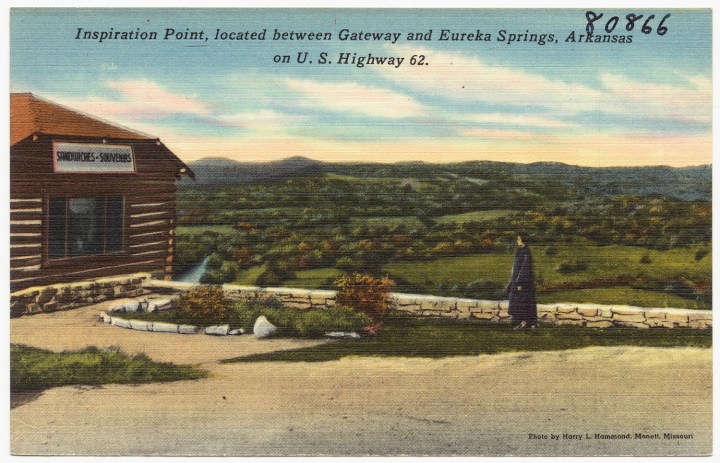
This favorite overlook sits on a cliff 550 steep feet above the twisting White River and its green valley, with an exceptionally broad expanse of sky above.
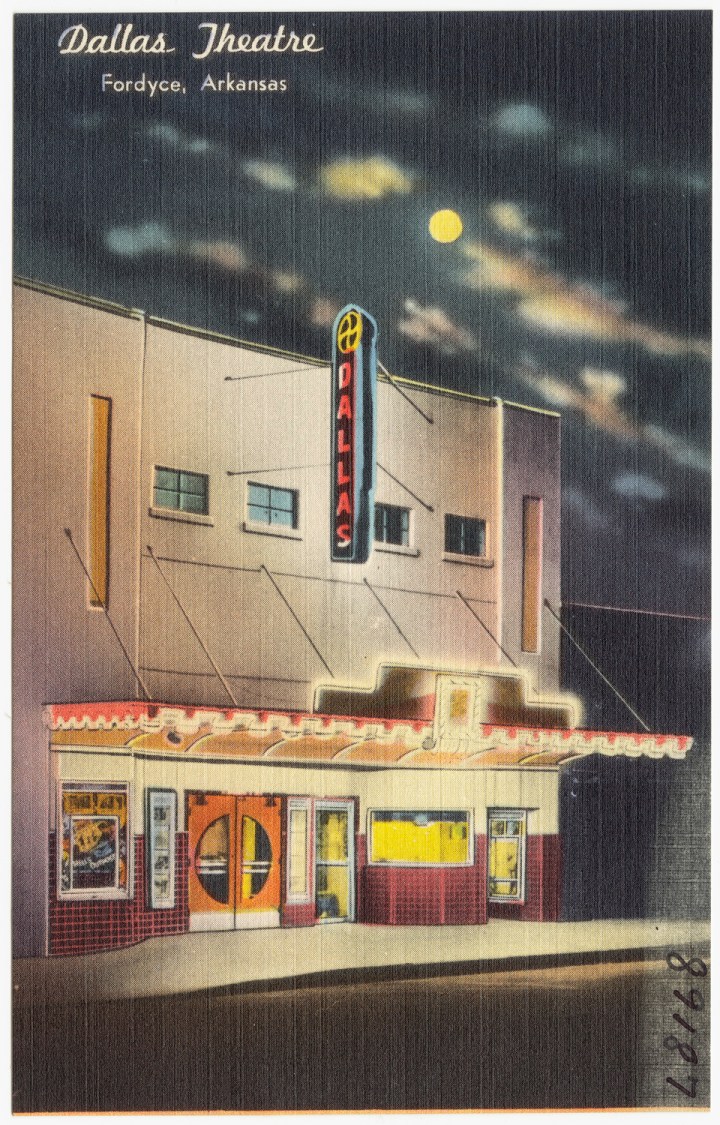
Fordyce is located in Dallas County, Arkansas in the southern half of the state.
Advertisement
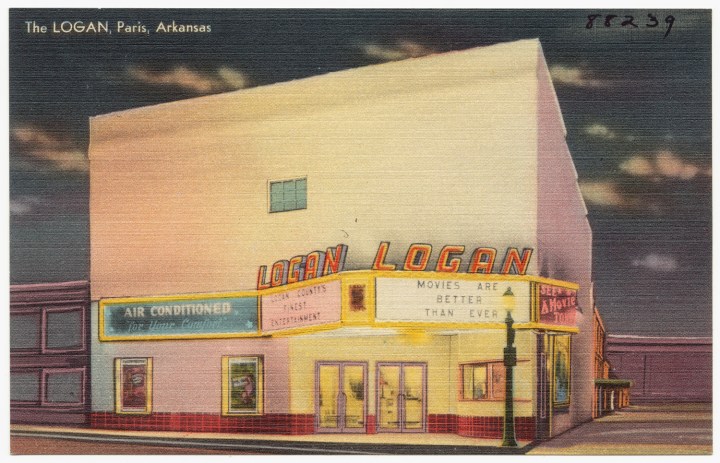
Paris, Arkansas is located in Logan County, toward the northwestern part of the state.
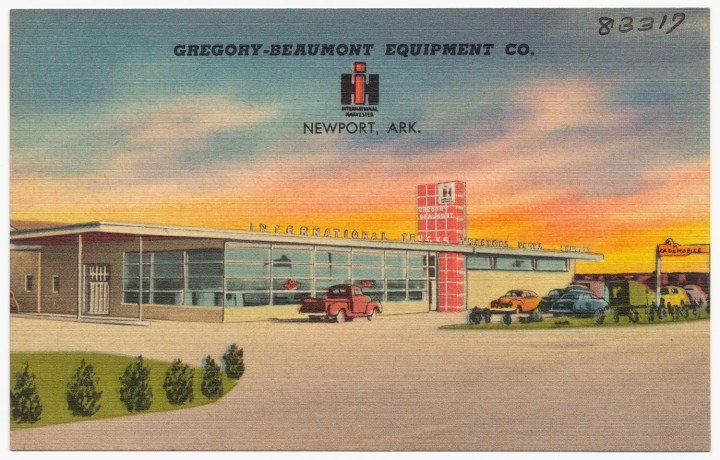
Newport, Arkansas is located on the White River, 85 miles east of Little Rock in Jackson County.
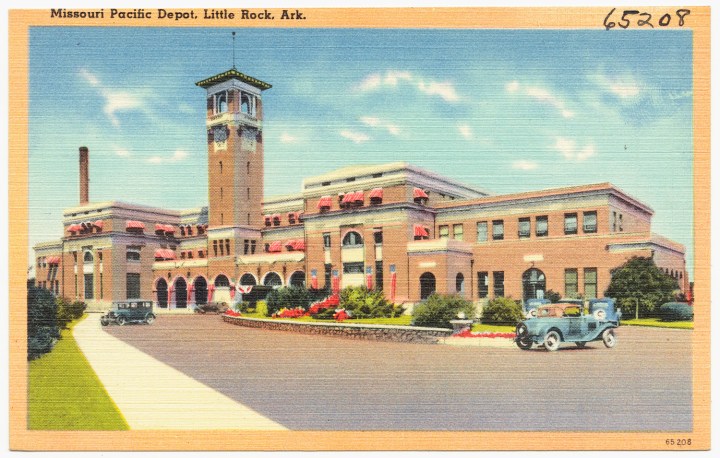
The station is still in service and is listed on the National Register of Historic Places.
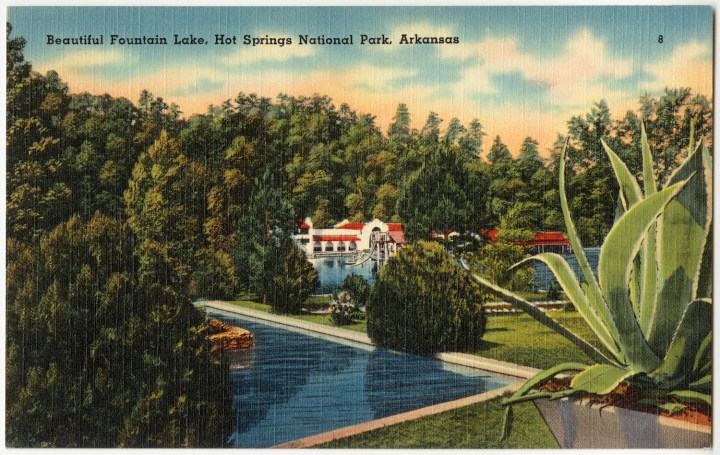
Fountain Lake is also a town in Garland County, however it is not near the tourist destinations seen in the postcards.
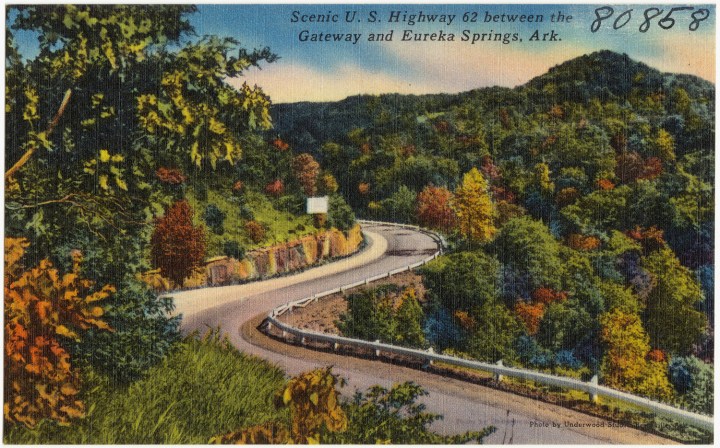
US 62 runs concurrent with several highways in Arkansas including Interstate 49 and U.S. Route 71 between Fayetteville and Bentonville, U.S. Route 412 through much of the state, U.S. Route 65 in the Harrison area, and with U.S. Route 63 and U.S. Route 67 in northeast Arkansas.
Advertisement

Despite various attempts to restore or save the Majestic, the abandoned lodge caught fire and was destroyed in 2014.

The first Little Rock Public Library was one of four Carnegie Libraries in Arkansas. The Carnegie Corporation of New York made a grant of $50,000 in 1906, but increased the grant to $88,100 in 1907.
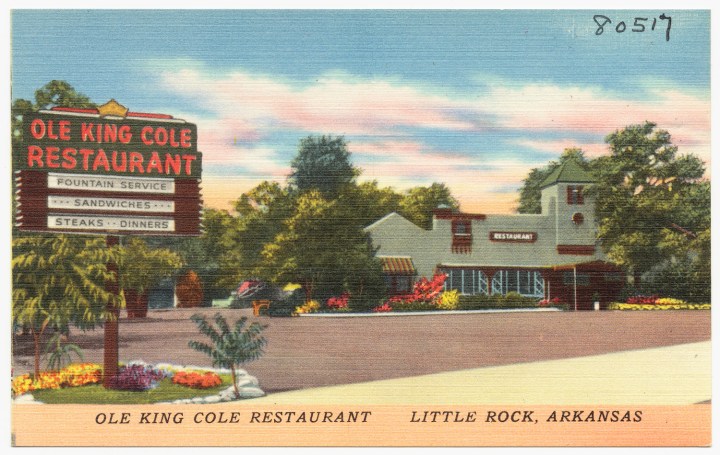
Many old-school natives of Little Rock list this eatery among their favorites they wish would make a return.
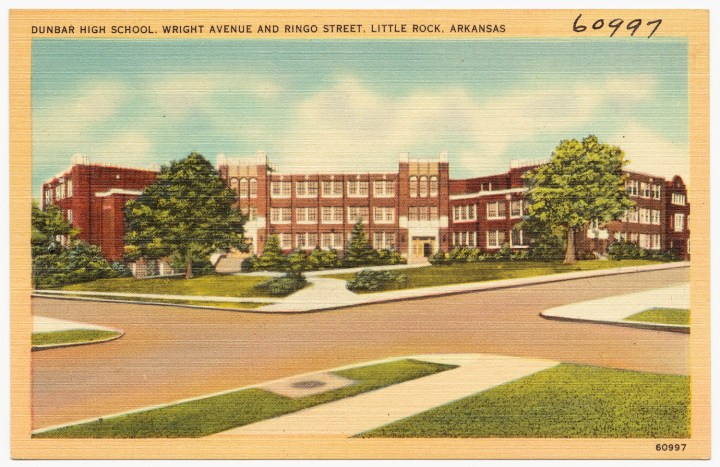
Still an active part of the Little Rock School District, Dunbar now serves as a middle school and magnet school for students across Pulaski County, Arkansas.
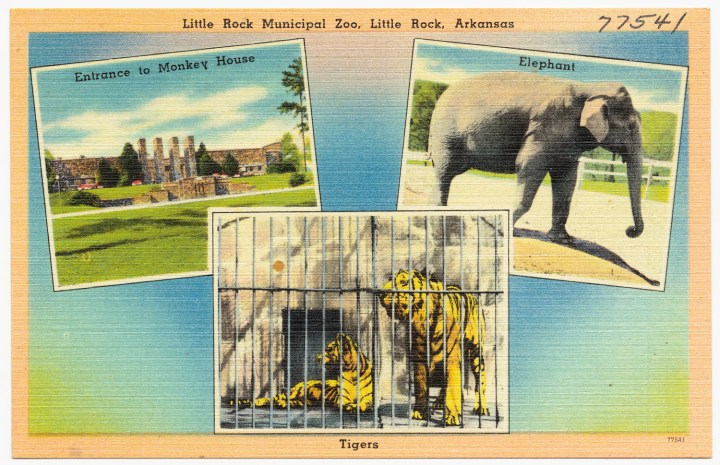
The Little Rock Zoo is home to more than 725 animals representing over 200 species, and covers an area of 33 acres.
Advertisement

In early 2009, UAMS opened a new hospital, a 540,000-square-foot facility with 234 adult beds and 60 neonatal beds.
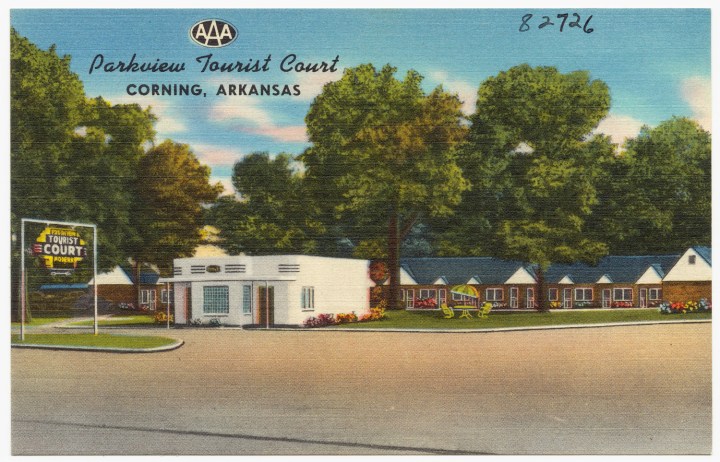
The terms "tourist camp" and "tourist court" were used to describe both an individual cabin or room rented for the night and the business as a whole. In their early days, they typically consisted of stand-alone structures that looked and functioned like small houses, with as few as four units to rent. Those built during and after World War II were increasingly likely to be under a single roof in the form recognizable today as motels.
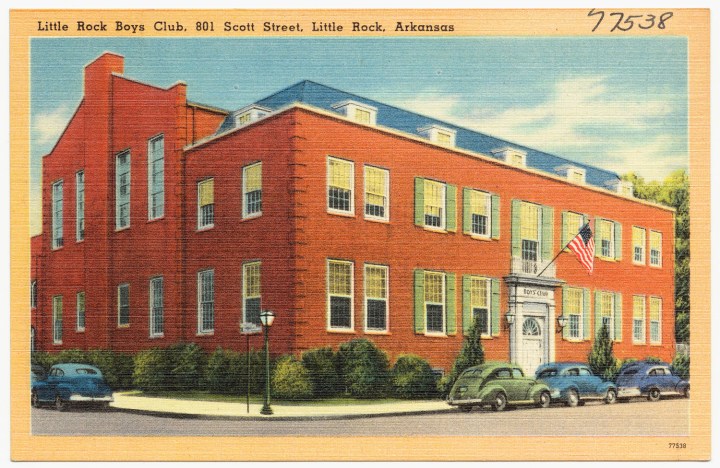
With the growth of Pulaski County throughout the years, additional Clubs were formed to serve the needs of the children of the community. Four Clubs were established in Little Rock and three in North Little Rock.
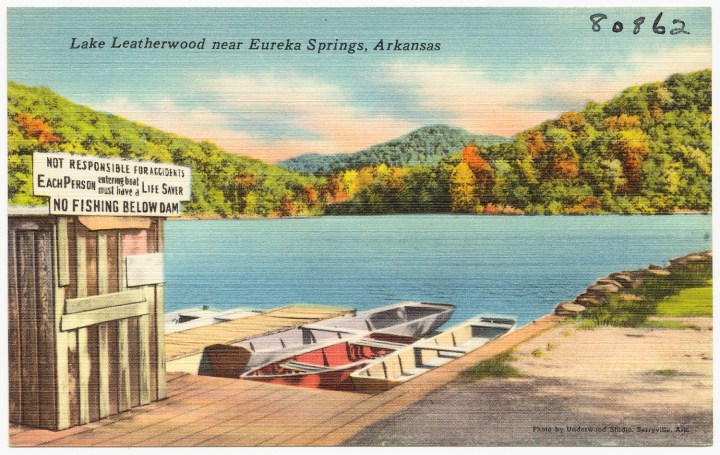
The lake is formed by one of the largest hand-cut native limestone dams in the country.
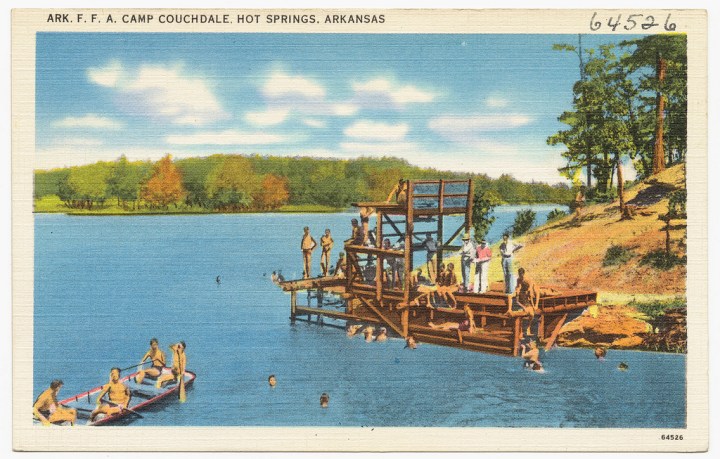
Today more than one million young people have spent one or more weeks at Couchdale enjoying the recreational activities such as boating, fishing, swimming, boxing, wrestling, pillow fighting, and other sports
Advertisement
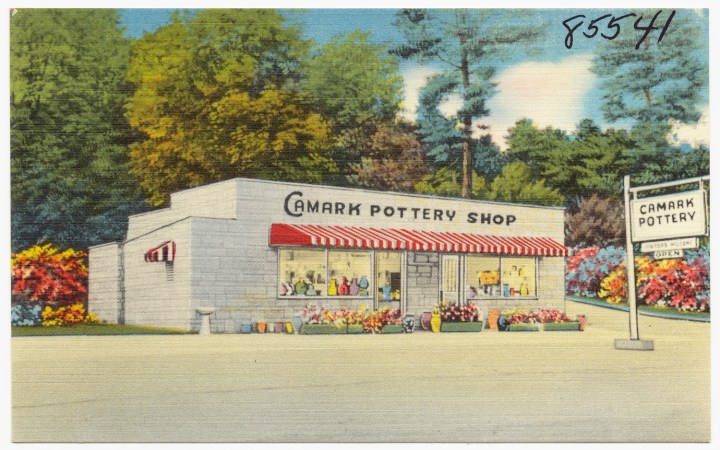
Camark Pottery eventually become one of Camden’s best-known industries and was known nationwide.
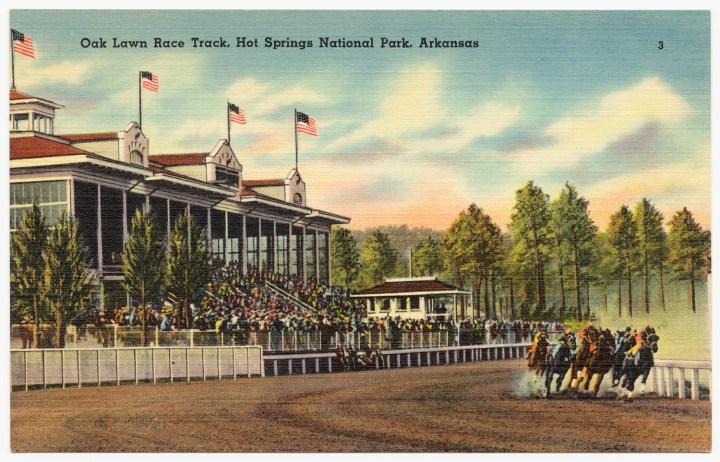
In the 1930s, the track and "Spa" combined attracted many horse racing fans. In 1935, Oaklawn increased purses to become competitive with the best tracks across the country. The first Arkansas Derby was run in 1936 for a purse of $5,000.
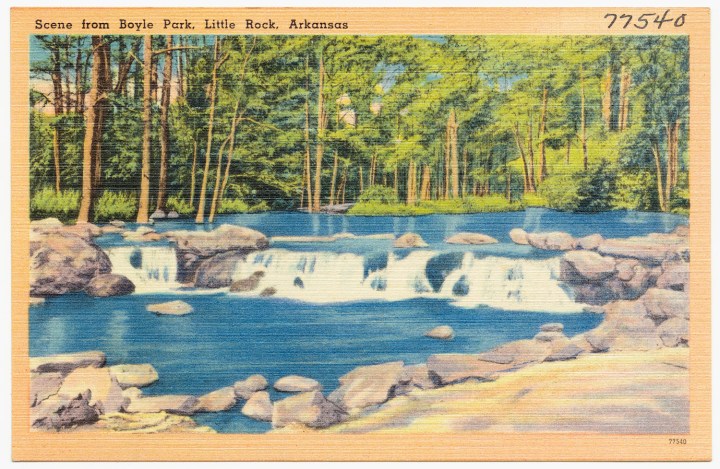
The park is mostly unimproved woodland. It contains a small wildlife pond, a playground, open meadows, woods, and numerous hiking and biking trails. Rock Creek flows through the park.
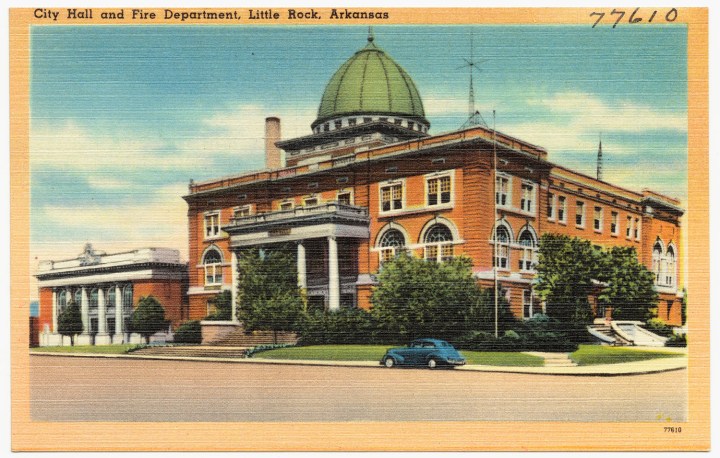
On December 28, 1905, the Little Rock City Council approved $150,000 to build the current Little Rock City Hall. Work on the new city hall started on November 4, 1906, and a grand-opening celebration for the three-story building featuring decorative stone was held on April 15, 1908.
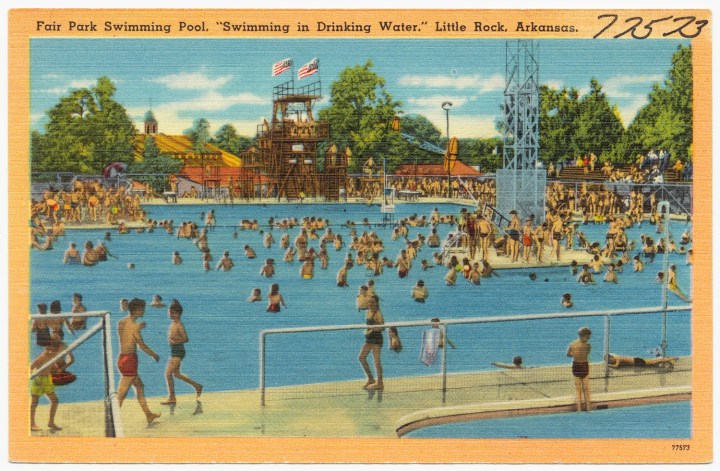
The War Memorial Complex now houses the pool which features an indoor pool and a reduced-size outdoor pool.
Advertisement

The original building was constructed in 1937 and has been upgraded and modernized vastly since its first days of operation.
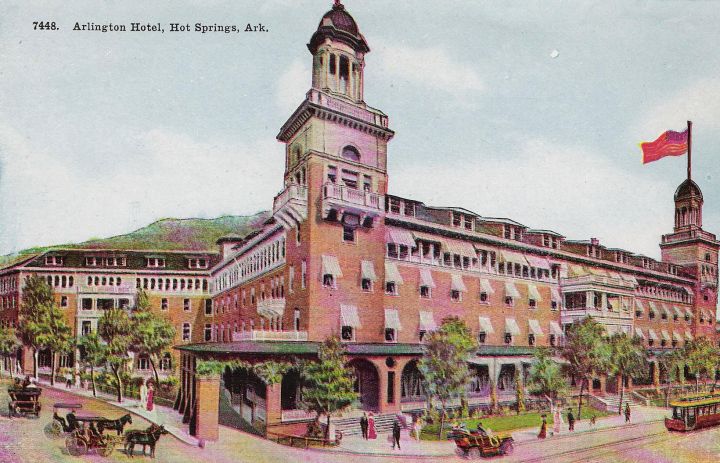
The historic Arlington Resort Hotel & Spa is the largest hotel in Arkansas.
Since 1875 The Arlington has been hosting guests as one of the South's premiere resorts.
These glimpses into the past of the Natural State are an interesting time machine for historians and curious knowledge seekers today. It’s always good to keep a little history behind so you know where you came from!
OnlyInYourState may earn compensation through affiliate links in this article. As an Amazon Associate, we earn from qualifying purchases.


